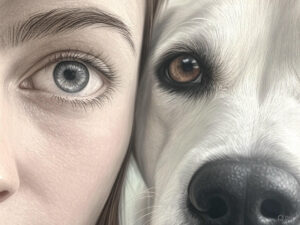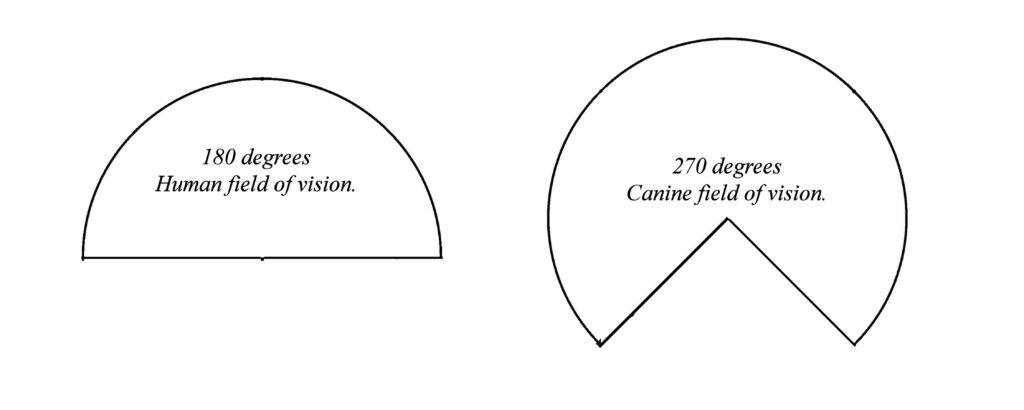Silence has fallen throughout my home, causing me to pause as I wonder if I should be concerned.
“Maybe he’s just napping,” I think to myself briefly before an urgency overcomes me, and I must find out, in case something is being destroyed, again.
Before I begin my room-to-room search, I catch a glimpse of a shadow being cast down the hallway. I peek around the corner to find my little canine friend in one of his favorite spots, sitting and gazing out at the world on the other side of the glass door. He seems to be mesmerized by something, and I often wonder how the world must appear to him.
I’ve wondered such things before, but today, since the house is quiet and my little friend is occupied, I think, “Why not do a little research, and see what I can learn?”

What I quickly discovered is that human eyes and dog eyes are quite different. Humans definitely have the overall advantage when it comes to eyesight, with one significant exception: dogs can see much better in low-light settings. There are articles that state dogs have “excellent night vision,” and that their eyes are “made to see in the dark,” but this isn’t entirely accurate. If you essentially enter a pitch-black environment, a dog is no better off than a human. It is in a low-light situation where dogs can make out objects over a much greater distance than humans. Not only is low light an advantage for dogs, but bright light essentially handicaps their sight.
Everything about a dog’s eye is more rounded than ours, with pupils that open wider. Where our retinas are composed of cones, theirs are mainly composed of rod cells. Dogs have an additional mechanism called a tapetum that reflects any light that gets past the retina, and this is why we occasionally catch a glimpse of a glowing, greenish reflection coming from our dog’s eyes.
Our field of vision is also quite different; humans have approximately 180 degrees of vision, whereas dogs have up to 270 degrees of vision, depending on the breed.

Dogs see movement and motion, but they cannot see the details that humans do, and humans are far superior in their ability to track objects with only their eyes. Dogs, however, combine other senses, relying more on smell and sound than what they see. It’s difficult for us to imagine all of three of those senses working in concert, but the fact that they do is what gives dogs a considerable advantage over humans.
If someone were to be running nearby, you could possibly hear them first, then turn your head to bring them into your field of vision. Imagine this for a dog; with the expanded field of vision, seeing and hearing will typically happen together, with the dog turning its head to zero it’s nose in, and in that moment, the canine isn’t just taking it all in, the animal is actually tracking the trajectory of the runner.
The runner could be moving in near darkness, and the canine will know precisely the direction in which the runner is moving, based more on sound and smell than sight. However, if you actually want to be seen better by dogs, then wear yellow.
I had always heard that dogs were colorblind, but that isn’t exactly true. It can be better likened to typical color blindness in humans, where a color-blind person often has a difficult time distinguishing between greens and reds. Dogs see colors like gray, blue, and yellow, which is why they may run and pick up the yellow toy before the others.
With all of this newfound knowledge, I check on my little friend, and he’s still looking through the glass door. I can’t help myself as I grab his leash and walk him outdoors, because simply watching the world isn’t quite good enough for him when he was built to experience it.

 Call Us Today 864-901-3189
Call Us Today 864-901-3189
